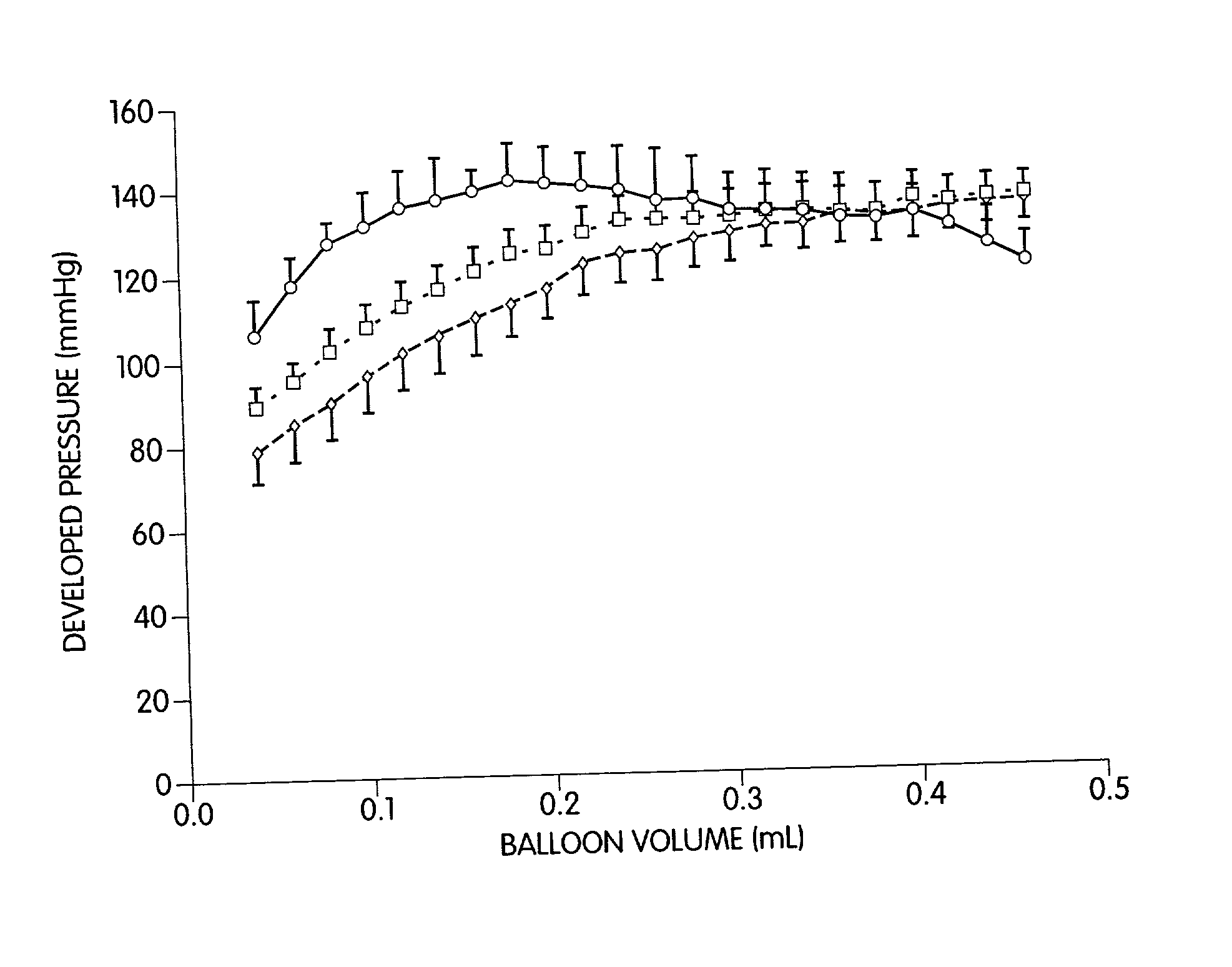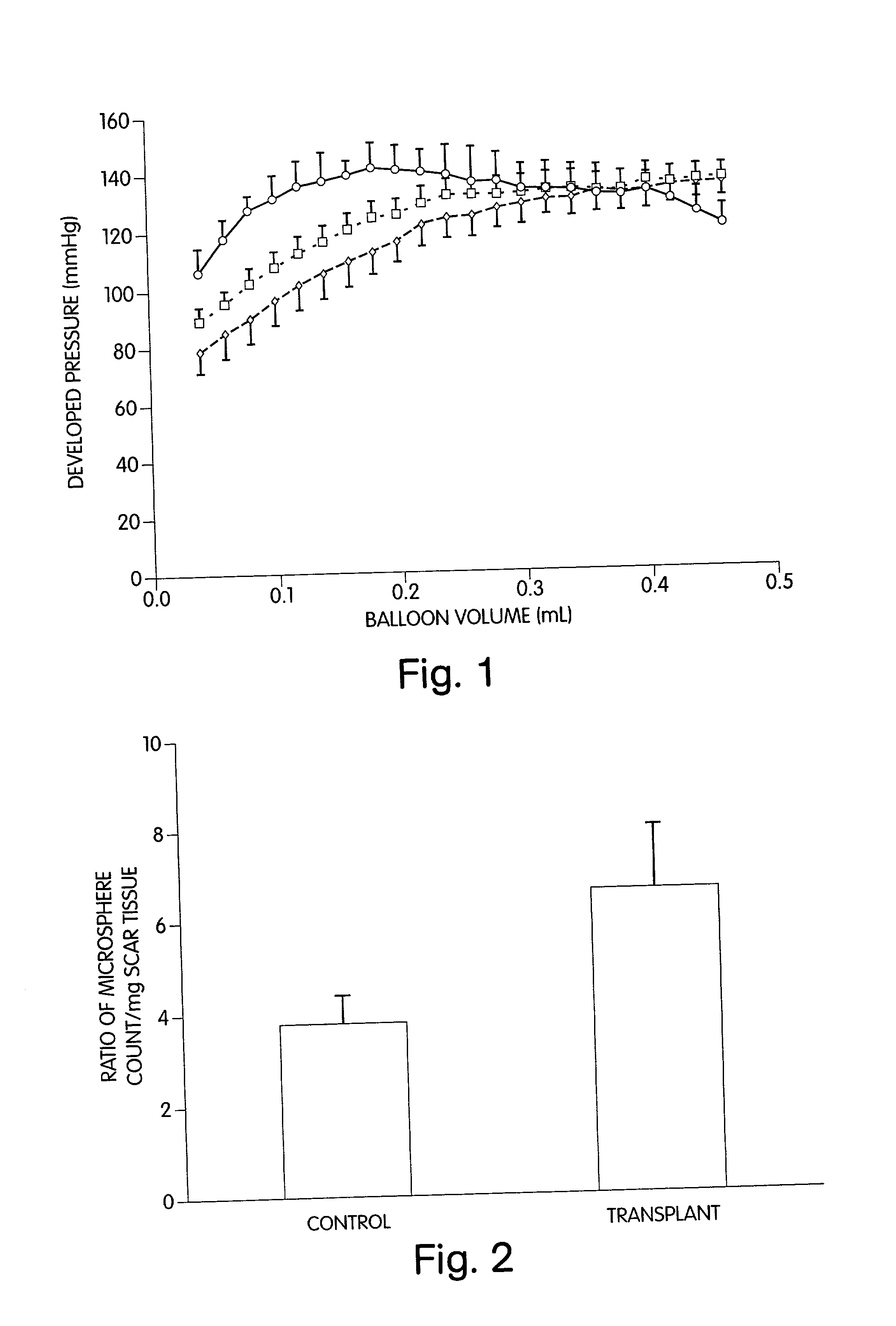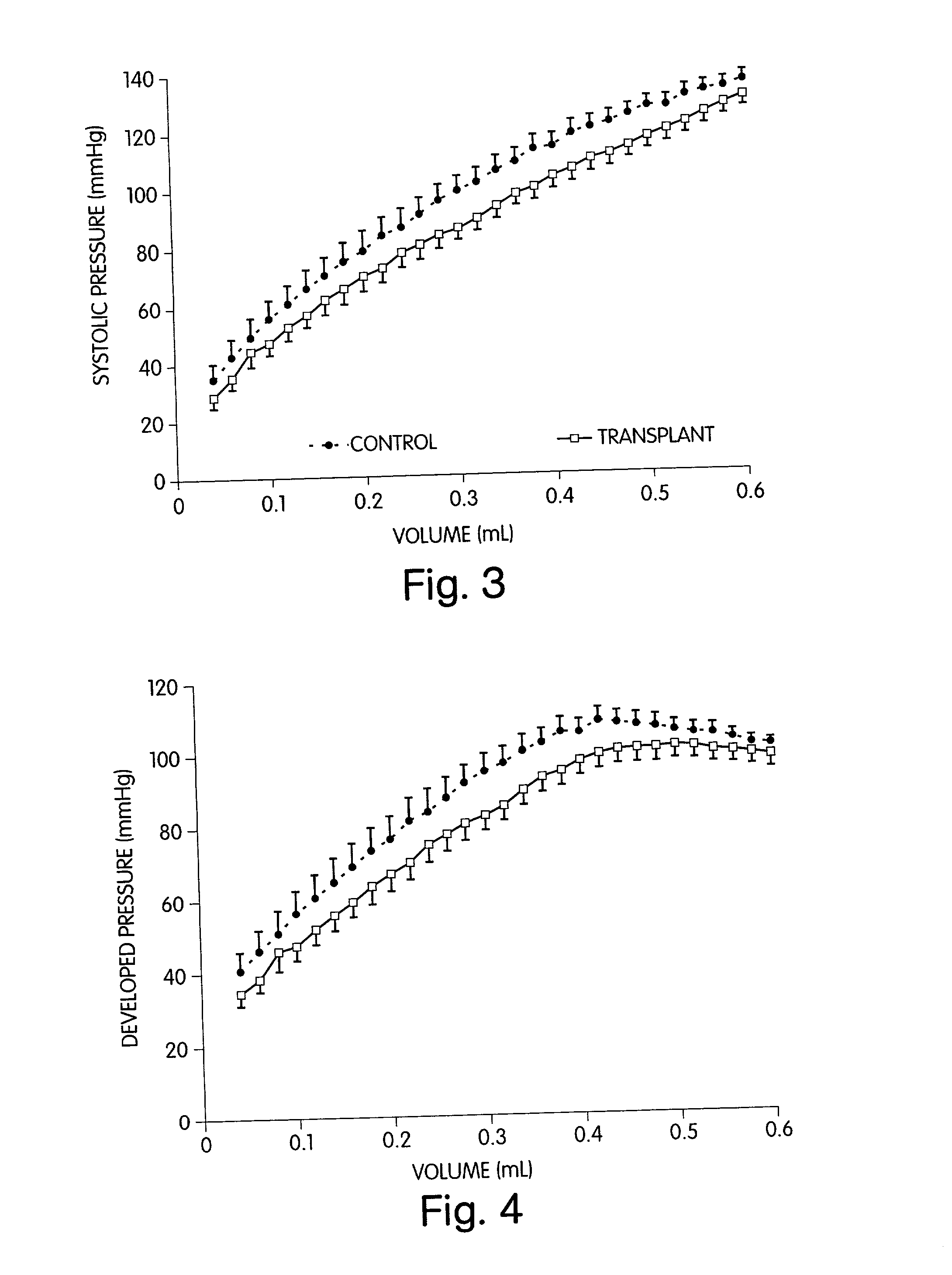Transplants for myocardial scars
a technology for myocardial scars and transplants, applied in the field of transplants for myocardial scars, can solve the problems of cultured cells not being successfully transplanted into mature scar tissue, interfering with normal cardiac function, and tissue ballooning, etc., to stimulate angiogenesis, improve myocardial function, and limit myocardial remodeling
- Summary
- Abstract
- Description
- Claims
- Application Information
AI Technical Summary
Benefits of technology
Problems solved by technology
Method used
Image
Examples
Embodiment Construction
[0061] We have discovered methods for improving the outcome of patients having myocardial scars. Our discovery was made while investigating the use of grafts, comprising cellular transplants, for treating scar tissue in the heart. We transplanted cultured cells into the center of a mature ventricular scar so that there was no contact between the transplanted cells and the host cells. Such methodology was followed to aid in the identification of the transplant. Initially, in transplanting fetal cardiomyocytes into the mature scar, it was surprising to find stimulation of angiogenesis in the affected area and an improvement in heart function. Since we were previously unsuccessful in transplanting adult ventricular cardiomyocytes into myocardial scar tissue, we were surprised that adult atrial cardiomyocytes could be successfully transplanted into such scar tissue. In further studies, we have transplanted auto- and allo-smooth muscle cells, fibroblasts, and endothelial cells into the c...
PUM
| Property | Measurement | Unit |
|---|---|---|
| volumes | aaaaa | aaaaa |
| volumes | aaaaa | aaaaa |
| volumes | aaaaa | aaaaa |
Abstract
Description
Claims
Application Information
 Login to View More
Login to View More - R&D
- Intellectual Property
- Life Sciences
- Materials
- Tech Scout
- Unparalleled Data Quality
- Higher Quality Content
- 60% Fewer Hallucinations
Browse by: Latest US Patents, China's latest patents, Technical Efficacy Thesaurus, Application Domain, Technology Topic, Popular Technical Reports.
© 2025 PatSnap. All rights reserved.Legal|Privacy policy|Modern Slavery Act Transparency Statement|Sitemap|About US| Contact US: help@patsnap.com



